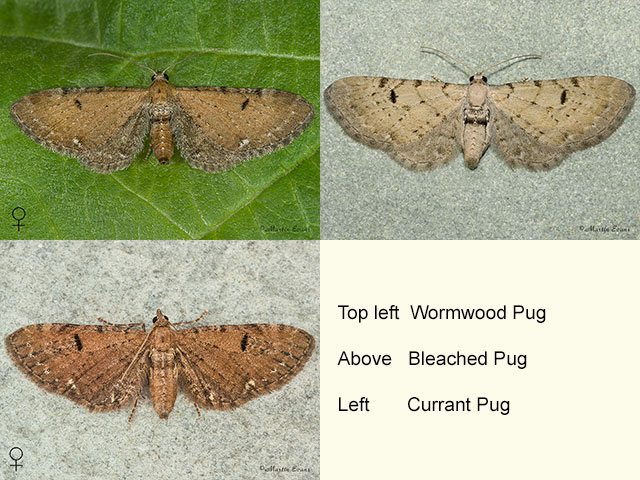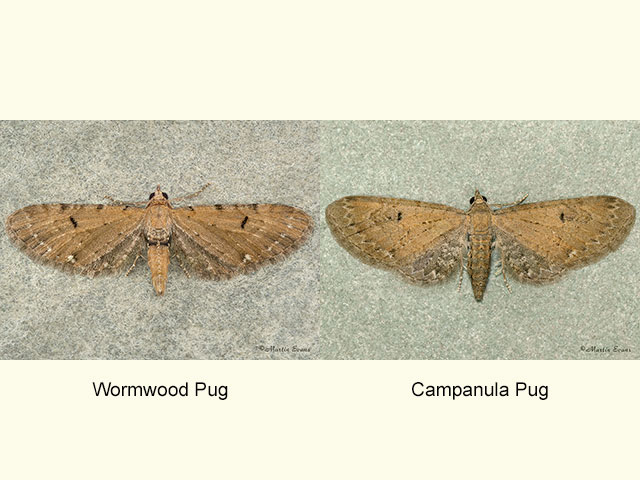Geometridae
70.179 Wormwood Pug Eupithecia absinthiata (Clerck, 1759)
Common
Similar species: Ling Pug Eupithecia goossensiata is a heathland species that is smaller (9 to 11mm) and greyer in colour. Bleached Pug Eupithecia expallidata has a broader pale forewing (12 to 13mm) with cross-lines and a less obvious white spot in the trailing corner. Currant Pug Eupithecia assimilata has a smaller (9 to 12mm), broader, reddish forewing and an even more obvious white spot in the trailing corner. Campanula Pug Eupithecia denotata has less prominent markings on the leading edge of the forewing and lacks the dark band across the base of the abdomen.
Forewing: 11 to 13mm
Habitats: Open woodland, moorland, heathland, grasslands, road verges, salt-marsh, tidal river-banks, sand-dunes and gardens.
Habits: The moth flies from dusk and comes to light.
Foodplant: The larva feeds on the flowers of ragworts, Mugwort, Yarrow, Wormwood, Sea Wormwood, Sea Aster, Michaelmas Daisy, Goldenrod, Canadian Goldenrod, goosefoots, Hemp Agrimony, Field Scabious, Heather and other herbaceous plants. It pupates in loose soil.






